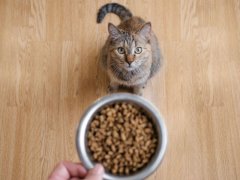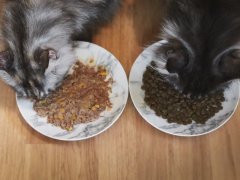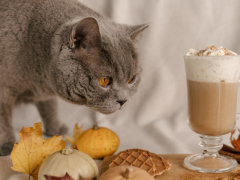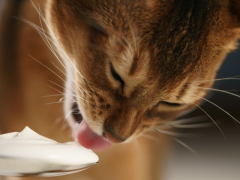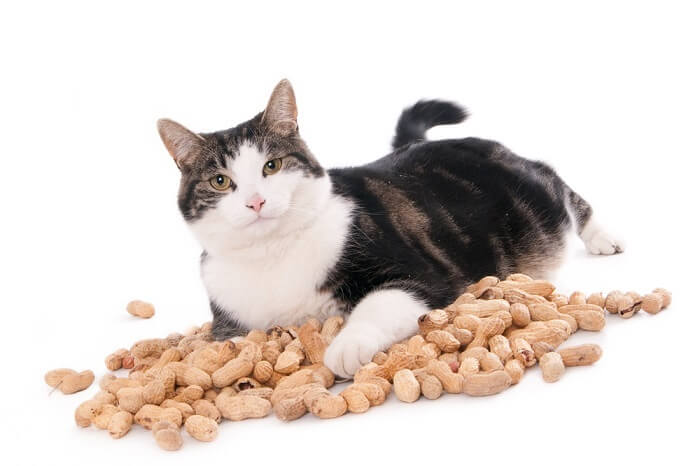
Peanuts are a popular snack in the human world, with many people enjoying them during home movie nights or cinema trips. They’re the perfect on-the-go snack if you’re going on a road trip.
It’s a common misconception that peanuts are nuts, but actually, they’re part of the legume family, like lentils and beans. Some people are allergic to peanuts, and these allergies can be pretty severe. Still, for those who aren’t, peanuts can be enjoyed as part of a healthy diet.
So, what about our feline friends? Can they enjoy a peanut now and again? What about allergies? Can cats be allergic to peanuts like their pet owners can?
Although plain, unsalted peanuts that are removed from their shell aren’t toxic to cats, there are still a few reasons why they’re not a great snack choice for your furry family members. One of these reasons is the risk of allergy.
Other reasons include the risk of choking and the high fat content. So, let’s find out more about the potential benefits and risks of peanuts to cats.
Are Peanuts Good for Cats?
There are no specific benefits of feeding peanuts to your cat over other treat options. Peanuts are a great source of protein, and cats need protein for the growth and repair of their body tissues.
However, because cats are carnivores, most of this protein should be animal protein rather than plant-based. The good fats contained within peanuts are great for keeping your cat’s skin and coat healthy, as well as having roles in their nervous system and immune system.
The vitamins, minerals, and trace elements in peanuts are good for your cat’s heart, bones, and teeth, and maintaining blood pressure.
Do Cats Like the Taste of Peanuts?
Every cat is different, and so is their taste! Some cats seem to enjoy eating peanuts, while others aren’t interested at all. It certainly appears that most cats favor fishy or meaty flavors and smells that are more potent, so peanuts might seem a little boring by comparison.
How Many Peanuts Can a Cat Eat?
Despite being packed full of nutrients, it’s best not to give your cat peanuts. If you want to give your cat an occasional healthy treat, there are much better options than peanuts.
However, if you decide to offer your kitty some peanuts, you should follow a few guidelines. Firstly, any peanuts you offer should be removed from their shells and free from seasoning or flavorings.
You shouldn’t be offering your cat salted peanuts, only dry roasted or boiled, unsalted peanuts. Ideally, you shouldn’t feed whole peanuts either, as these could be a choking hazard.
As with any new food, you should offer a tiny amount initially to see if it causes any worrying symptoms like allergies, vomiting, or diarrhea. Once you know that your cat can cope with eating a small amount of a peanut, you could offer one or two crushed or halved peanuts at a time.
How Often Can a Cat Eat Peanuts?
Most of your cat’s diet should be animal protein because they are carnivores. Any extra treats and tidbits should be kept to a minimum so that your purrfect pal still gets the nutrients they need.
It’s best to avoid giving your cat peanuts altogether, but if you really want to, you should make sure you don’t offer them more often than every couple of weeks. They should ideally be given once in a blue moon, or not at all.
Are Peanuts Used in Commercial Cat Food?
Peanut butter is a component of a fair bit of dog treats, but it’s less commonly used for cat treats, perhaps because cats prefer fish or meat flavors.
However, as long as peanut butter doesn’t contain xylitol, it’s safe to give a small amount to your cat occasionally. And, of course, giving peanut butter instead of whole peanuts will avoid any risk of your cat choking.
Are Peanuts Bad for Cats?
The primary concern with feeding your cat peanuts is that, although they’re nontoxic, they’re not meant to be part of a carnivorous diet. Each time you give your cat a treat or food off your plate, you risk causing them to eat less of their cat food.
Their cat food contains the animal protein they need and the correct balance of vitamins and minerals, so it’s best not to tamper with their diet too much. Therefore, it’s recommended that your cat’s diet is made up of 90% to 95% cat food and only 5% to10% treats and tidbits.
Another risk of eating peanuts for cats is they often contain salt or other seasonings and flavorings to make them extra tasty for us humans. Too much salt isn’t just unhealthy for your four-legged friend; it could even lead to salt poisoning, which can be fatal. Making sure you only feed your cat plain peanuts that have been shelled and crushed or split will help to avoid the risk of choking, too.
Finally, just like humans, cats can be allergic to peanuts. Peanuts are high in protein, making an allergy more likely. Thankfully, peanuts aren’t a very common choice when it comes to giving your cat a treat.
Summary
It’s really tempting to spoil our furry family members with human food, especially the special treats that we enjoy eating ourselves. It might seem OK to give your cat a plain, unsalted peanut or two now and again, but it’s worth looking at other healthier options.
It’s important to remember that any treats should be given only occasionally, no matter how healthy. This will ensure that your cat gets the nutrition they need to live a long and healthy life.
